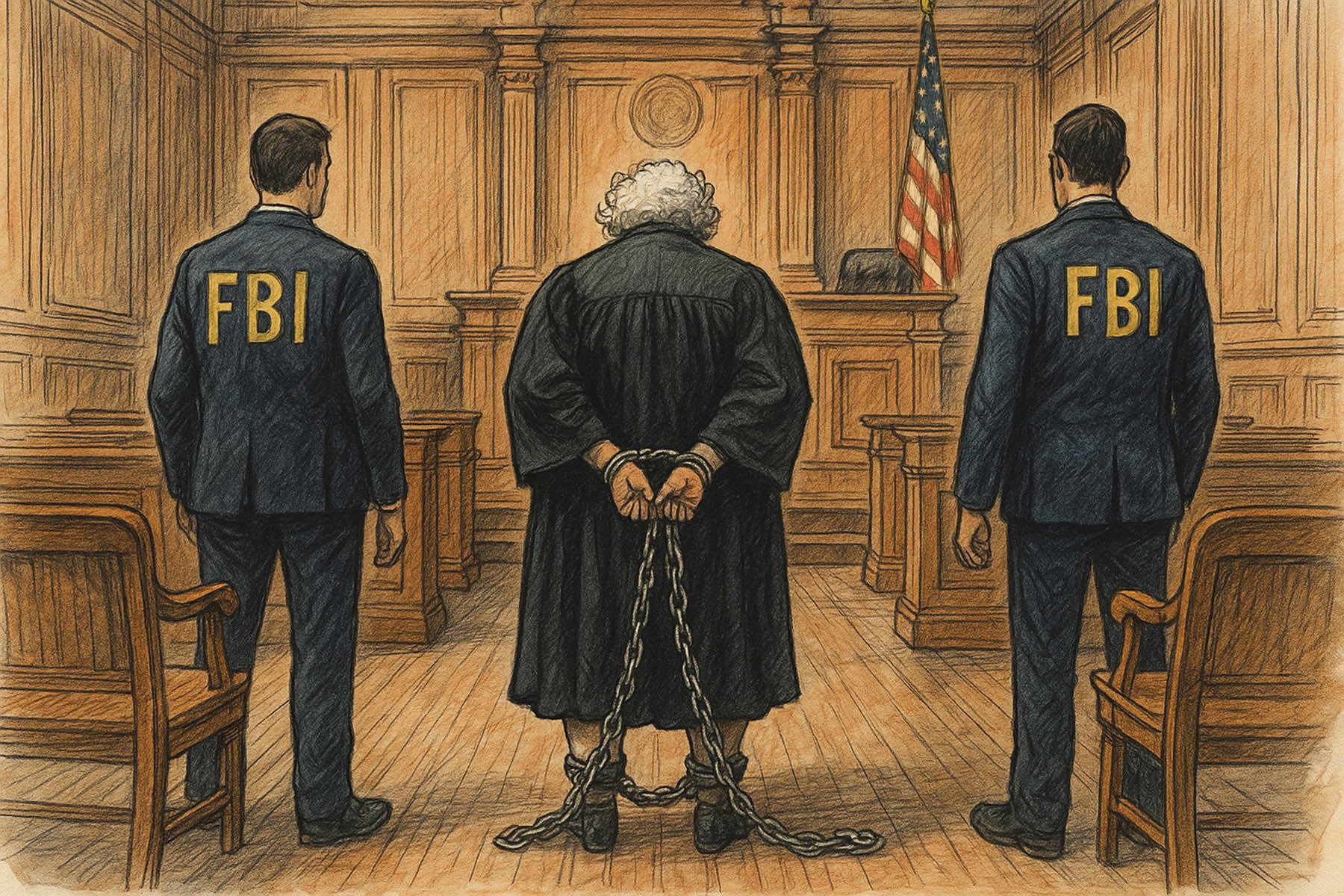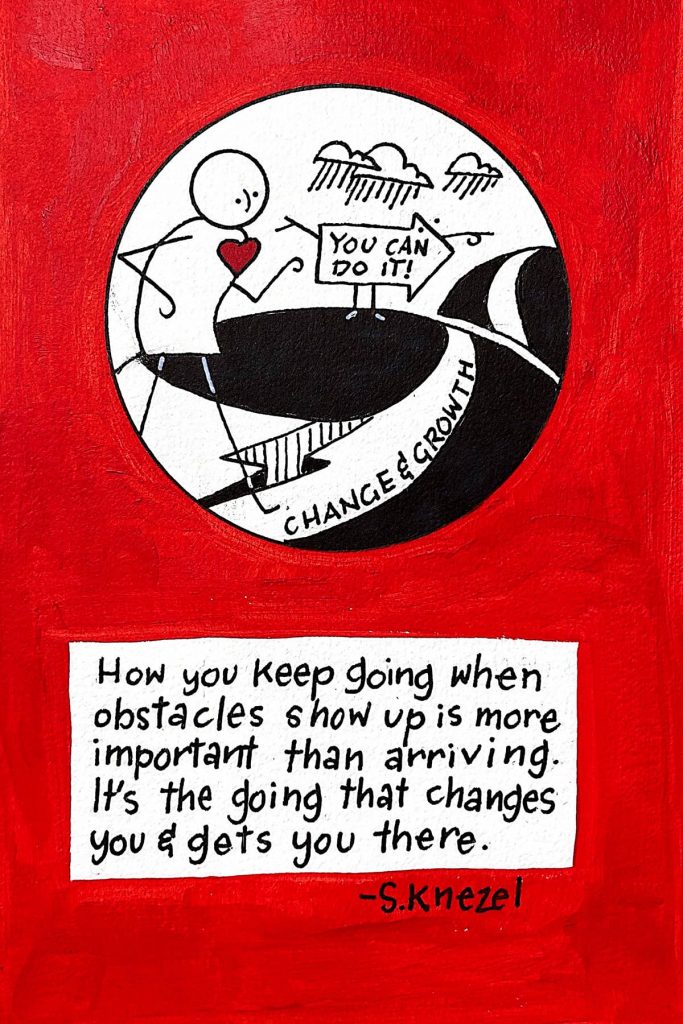
The news media environment of Milwaukee again revealed flaws in journalistic integrity with its coverage of Judge Hannah Dugan’s arrest by federal agents.
From the moment the story broke on April 25, familiar patterns emerged: aggressive framing, sensational headlines, and selective context all combined to paint a distorted picture of events.
The arrest, based on an unsupported accusation by a lone deportation officer that Judge Dugan had interfered with federal immigration authorities, provided an irresistible opportunity for many local outlets to exploit public fears.
Without offering basic explanations about the unusual legal circumstances — notably, the difference between an administrative immigration warrant and a judicial warrant — many of the early broadcast reports rushed to depict Dugan as a criminal obstructionist, casting her as a figure of scandal rather than carefully detailing the procedural gray areas involved in the case.
Nightly newscasts and early online articles presented an image of Judge Dugan being led by agents, framing it as a moment of disgrace. Discussions of the serious constitutional concerns raised by charging a sitting judge were often buried deep in the narrative, if they were mentioned at all.
Instead, the story was delivered as high drama: a breach of trust, an emblem of lawlessness, and implicitly, a confirmation of political narratives that view public institutions as corrupt.
This style of reporting is not new to Milwaukee, or any corner of America. But at a local level, it echoes a familiar and troubling trend from nearly a decade earlier during the unrest in Sherman Park in 2016.
Back then, following the fatal police shooting of Sylville Smith, much of the city’s news media prioritized spectacle over substance. Instead of exploring the socioeconomic collapse that had set the stage for the community’s anger — decades of segregation, chronic unemployment, and systematic neglect — most coverage zeroed in on burning cars and broken windows.
Sherman Park was portrayed as a danger zone, with residents depicted either as violent rioters or background props to the chaos. Helicopter footage, dramatic on-the-ground images, and panicked interviews dominated the news cycle.
For viewers unfamiliar with the neighborhood, or for those already predisposed to fear it, the message was unmistakable: Sherman Park was dangerous, and its residents were to blame.
Missing from much of that early coverage was any serious attempt to understand why the community had reached a breaking point. Instead of illuminating systemic problems, Milwaukee’s news media initially put effort into reinforcing them, profiting off public fear while ignoring the deeper causes.
The parallels to the coverage of Judge Dugan are clear, though the events themselves are fundamentally different. One was a spontaneous eruption after decades of structural inequality. The other, a high-profile arrest of a single public official under contentious legal circumstances as a political attack on the judiciary.
But the method of media engagement — the choice to emphasize scandal, conflict, and fear for the sake of viewership and clicks — remains sadly consistent. During the Sherman Park unrest, while larger outlets prioritized images of destruction, Milwaukee Independent was the first and one of the few news organizations that offered a more nuanced and community-centered perspective.
The reporting by Reggie Jackson and others focused on the people affected, including the youth who demanded justice, the residents who tried to calm tensions, and the pastors and community leaders who opened their doors to grieving neighbors.
Rather than fixating on the violence in isolation, the situations were contextualized by placing them within the long history of Milwaukee’s hypersegregation, the collapse of manufacturing jobs, and a criminal justice system that had often failed to deliver fairness to Black residents.
Headlines were sober, not sensational, and the photojournalism captured not just burned-out storefronts, but prayer circles, community cleanups, and quiet resilience. The reporting recognized the humanity of Sherman Park, refusing to reduce the neighborhood to a backdrop for fear-mongering.
Such an editorial approach was not without bias, but the bias of centering on marginalized communities was transparent, consistent, and aimed at offering depth, not distortion. Reporting was grounded in fact, context, and empathy — offering readers not just images of anger, but a full understanding of the conditions that gave rise to it.
That ethos was carried into the reporting of Judge Dugan’s arrest, in contrast to the early coverage by Milwaukee’s broadcast media which fell into the familiar patterns of negligence and sensationalism.
As those larger news outlets rushed to frame Judge Dugan as a villain or symbol of corrupt dysfunction, Milwaukee Independent approached the story with the same careful context as Sherman Park and other traumatic stories over the years.
Clearly and early, efforts were made to explain the distinction between a fake warrant, known as an “administrative warrant” issued like an internal memo by Immigration and Customs Enforcement (ICE), and a judicial warrant signed by a federal judge. It was a major difference with serious legal implications that many larger outlets ignored or downplayed.
One of the most egregious examples of negligence by Milwaukee news media involved what happened during Judge Dugan’s first court appearance. Despite being a sitting judge charged with a nonviolent offense, the 65-year-old female Judge was shackled at the ankles as if she posed a flight risk or was a dangerous threat.
Even being handcuffed is a deeply unusual move, reserved for dangerous criminal defendants. But sources confirm that Judge Dugan’s ankles were shackled during her appearance in the Federal courtroom.
The sources also noted that among the other individuals present in the courtroom, who observed the situation and Judge Dugan’s condition, were members of two Milwaukee news organizations.
Neither reported it.
That kind of omission is no small thing. Shackling a respected jurist is an extraordinary act, signaling prosecutorial aggression and humiliation tactics rather than standard procedure.
Withholding that detail fundamentally altered the public’s understanding of the proceedings. Even though Judge Dugan’s physical restraint was not filmed or photographed, two members of the local media witnessed the shackling and chose not to report it for unknown reasons.
Their silence deprived the public of critical context about the government’s aggressive handling of the case, leaving audiences with a distorted impression of normal legal procedure.
It was not simply a case of oversight. It reflected a choice to prioritize an uncritical, authority-driven narrative over factual completeness.
When the original story broke of the arrest, much of Milwaukee’s news media abdicated their journalistic responsibilities and simply treated the political claims issued by the Trump regime as fact.
Instead of offering the public information to make their own decisions, newsrooms re-packaged a toxic narrative that served their own interests to drive revenue.
The failure of judgment did not end there.
As Judge Dugan exited the courthouse to reach her vehicle, a local television station engaged in what could only be described as a tabloid ambush, a throwback to the worst instincts of 1980s-era sensationalism.
With a camera rolling, the reporters aggressively confronted Judge Dugan as she left the court building and walked a dozen feet to her vehicle. Lasting only a few seconds as she traveled from the building to her vehicle, the TV news crew captured footage of her trying to leave without comment.
That ambush clip was rapidly extracted, reframed, and spread by right-wing media outlets nationally, offering a distorted “perp walk” image of Judge Dugan that was disconnected from the reality of the charges or the legal nuances at play.
The initial footage itself was not staged for propaganda, but the unprofessional nature of the ambush made such misuse inevitable. It was a failure of ethical judgment that played directly into the hands of those seeking to weaponize the story.
In the critical early hours and first few days after Judge Dugan’s arrest, Milwaukee’s mainstream newsrooms largely failed in their core journalistic duties. Instead of investigating, questioning, or contextualizing, they operated as stenographers of the federal government’s questionable account and amplified misinformation.
It was only days later, after much damage had already been done, that more careful and fair-minded analysis began to surface in local broadcast media.
In effect, the same machinery that had once fanned the flames of fear and outrage during Sherman Park, and later the Black Lives Matter protests, repeated itself in an update for a new generation and a different target.
Only a handful of independent voices worked to pull public understanding back toward accuracy. Their reporting did not rely on breathless dramatics or unchallenged government narratives.
The focus remained on the facts and context: Judge Dugan’s long record of public service, the legal irregularities surrounding the politically motivated arrest, the procedural violations inside the courtroom, and the broader implications for judicial independence under a hostile federal authority.
These reports explained without excusing, reported without sensationalizing, and upheld the public’s right to a full and clear understanding of an unprecedented event in the city’s modern legal history.
In doing so, news organizations like Milwaukee Independent demonstrated what journalism can and should be: a service to the public, not a spectacle at their expense.
© Art
Isaac Trevik














